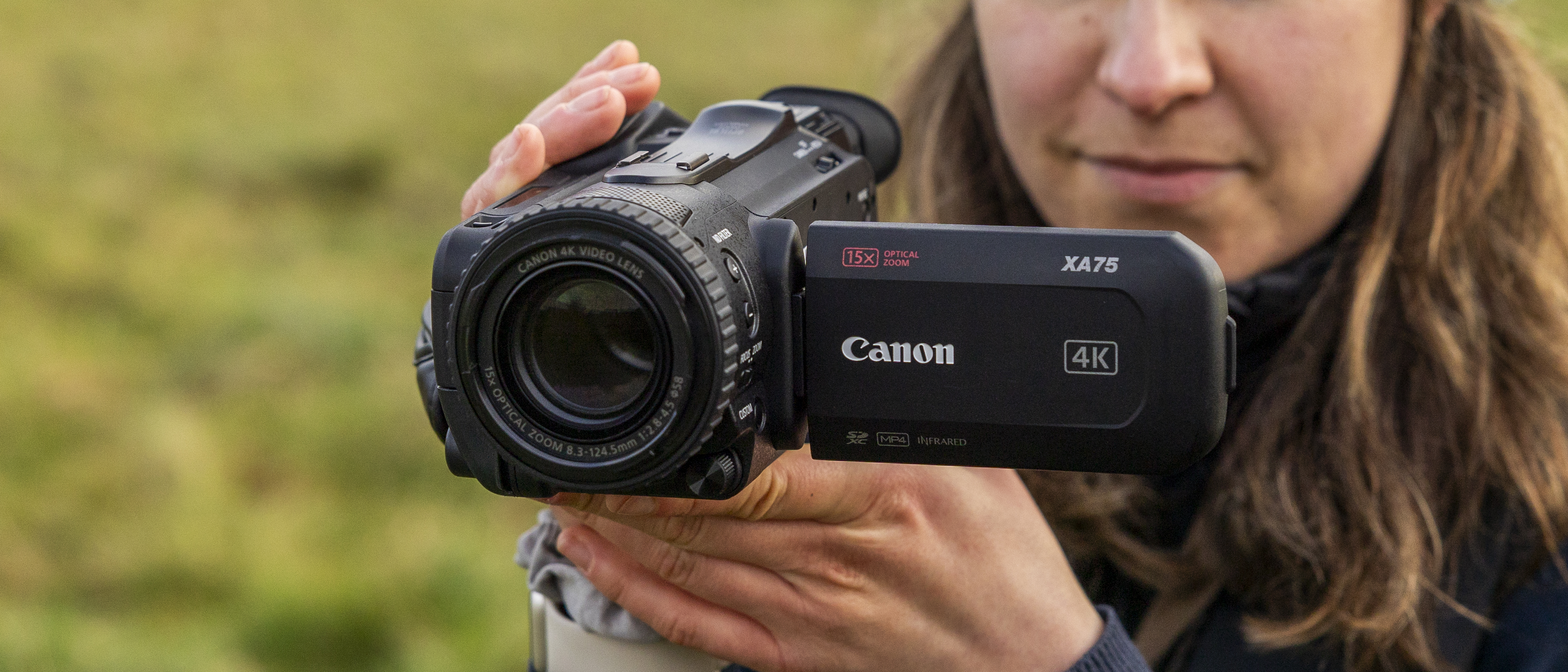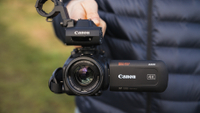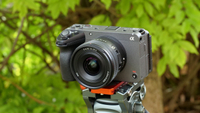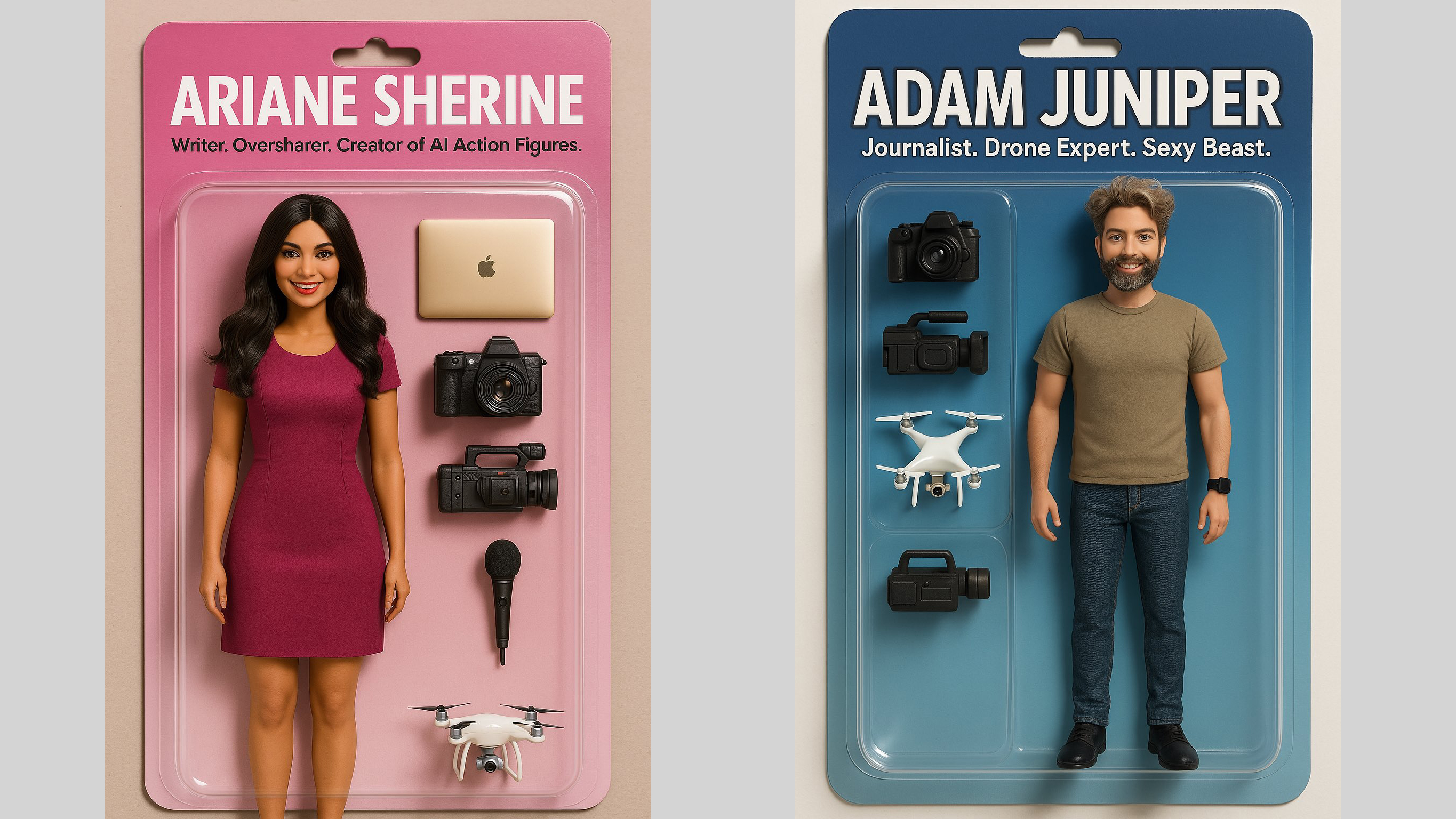Digital Camera World Verdict
The Canon XA75 is the company's most advanced and expensive professional camcorder. If your job is to make videos for news reports, productions for business and educational clients, or you regularly Livestream at home, then it's one of the best camcorders out there. The integrated 15x optical zoom lens can be limiting, despite the 25.5 – 382mm (35mm equivalent) it gives you. However, Canon's excellent face detection and high-end audio ports for XLR microphones ensure your content sounds as good as it looks. With poor connectivity options, the XA75 is a poor fit for content creators, and its high price will put off all but the most dedicated filmmakers, but the video quality is good enough for pros.
Pros
- +
Compact and comfortable to hold
- +
Detachable handle adds mic ports
- +
1-inch sensor delivers great footage
Cons
- -
4K recording limited to 25fps
- -
Pricey compared to mirrorless rivals
- -
Very specific use case
Why you can trust Digital Camera World
If you need a dedicated camera for recording video only, then choosing one of the best camcorders seems to make sense. They're easy to handhold, you don't have to (and indeed can't) change the lenses, and they produce decent results without too much tinkering. And yet, every time I review a camcorder, I struggle to understand why you'd buy one over the best cinema cameras or the best phone for video recording - depending on your skill level and budget. But then, perhaps I'm not the target market.
Canon released the Canon XA75 camcorder in September 2022 alongside a flurry of similar 4K-capable models; the XA65, XA60, XA70, and HF G70. It's the company's most expensive professional camcorder and top of the lineup in terms of specs, which include a 1-inch type CMOS sensor, 15x optical zoom with 40x digital zoom, and 5-axis Image Stabilization. Unlike cheaper camcorders, the XA75 also comes with a detachable handle unit, which lets you carry it from the top but also adds two XLR terminals for the best XLR microphones - the standard for recording crisp audio.
Max resolution: 3840 x 2160 px
Sensor: 1-inch type CMOS Sensor
Total pixels: 13.4MP
Zoom: 15x optical
Memory type: 2 x SD/SDHC/SDHX cards
Dimensions: 110 x 91 x 214 mm
Weight: 990g
With an asking price of around $3,000/£2500, you'd think the video resolution and capabilities would make it the best 4K camera for filmmaking. On paper, the XA75 lags behind some of the best mirrorless cameras, and cine cameras like the Sony FX30. But you do get XF-AVC and MP4 files for flexible recording, not to mention Dual Pixel CMOS autofocus and face tracking as found in the best Canon cameras.
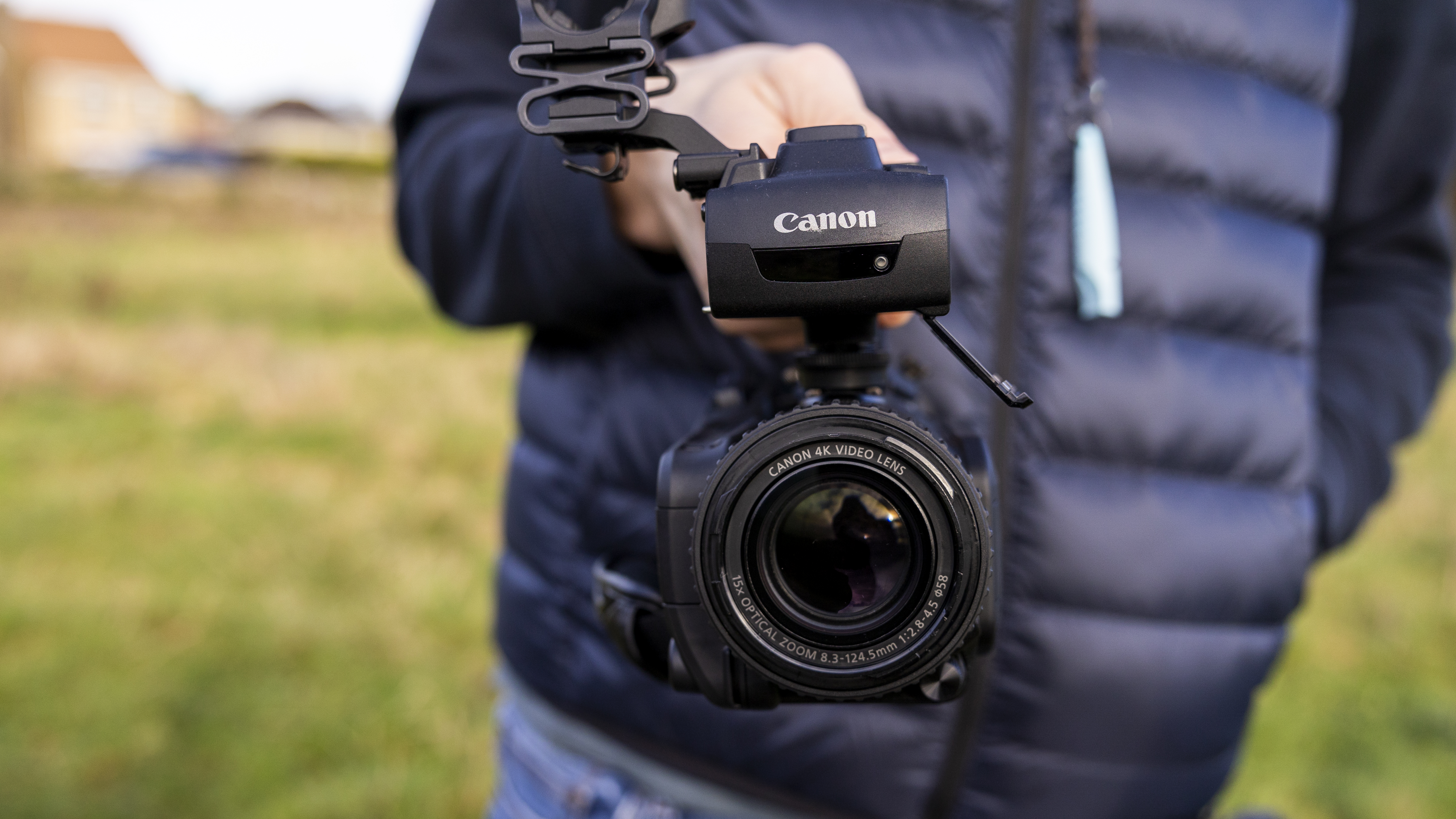
There's very little online coverage of the XA-75, and even fewer YouTube videos, which confirms my suspicions that this isn't a camcorder for content creators, even professional ones. It's also not for amateur users who just like the feel of a traditional camcorder, associate with making home movies, and don't want a mirrorless camera to do a similar job. It's too expensive for that. So who is it for?
As per Canon's own marketing, the XA-75 feels like a good fit if you're a journalist, roving reporter, or even a small-scale broadcaster looking for a compact option that you can handhold for run-and-gun footage or plonk on a video tripod when there's a need to keep the frame still. After all, with a fixed lens and no native 120p (slow-motion) recording at any resolution, this arguably isn't a video camera for creativity.
The Canon XA-75 is still versatile, however, and its limitations could be what makes it such a good fit for specific uses. I think it's a niche product that has a lot to offer a small proportion of users - specifically, those who have a fair budget, will know what to do with its detachable arm and the XLR microphone ports, but don't need high-quality stills. If you want to capture professional-looking (and sounding) documentaries or general footage for news, broadcasts, and live streams, could the XA75 be the camcorder for you?
Canon XA75: What's changed?
Launched in September 2022 alongside the Canon XA65 and prosumer Canon HF G70, the Canon XA75 replaces the Canon XA55 from three years previous. Both camcorders share a 1-inch-Type CMOS sensor and 15x optical zoom, along with H.264/MP4 4:2:0 8-bit recording modes and a maximum UHD 4K30.
Aimed at the professional end of the market, improvements to the XA75 look modest at first. They include new external recording modes, slow-motion support, and two USB-C ports - one for fast video output and another for power input. Viewing and framing content is nicer, as the articulating LED is now touchscreen, 0.5 inches bigger at 3.5 inches, and sharper with more than five times the resolution of its predecessor. There's also a higher resolution tiltable 0.36-inch OLED EVF, and on-screen display (OSD) "Time Stamp" recording, which is a requirement for videographers wanting to record legal proceedings.
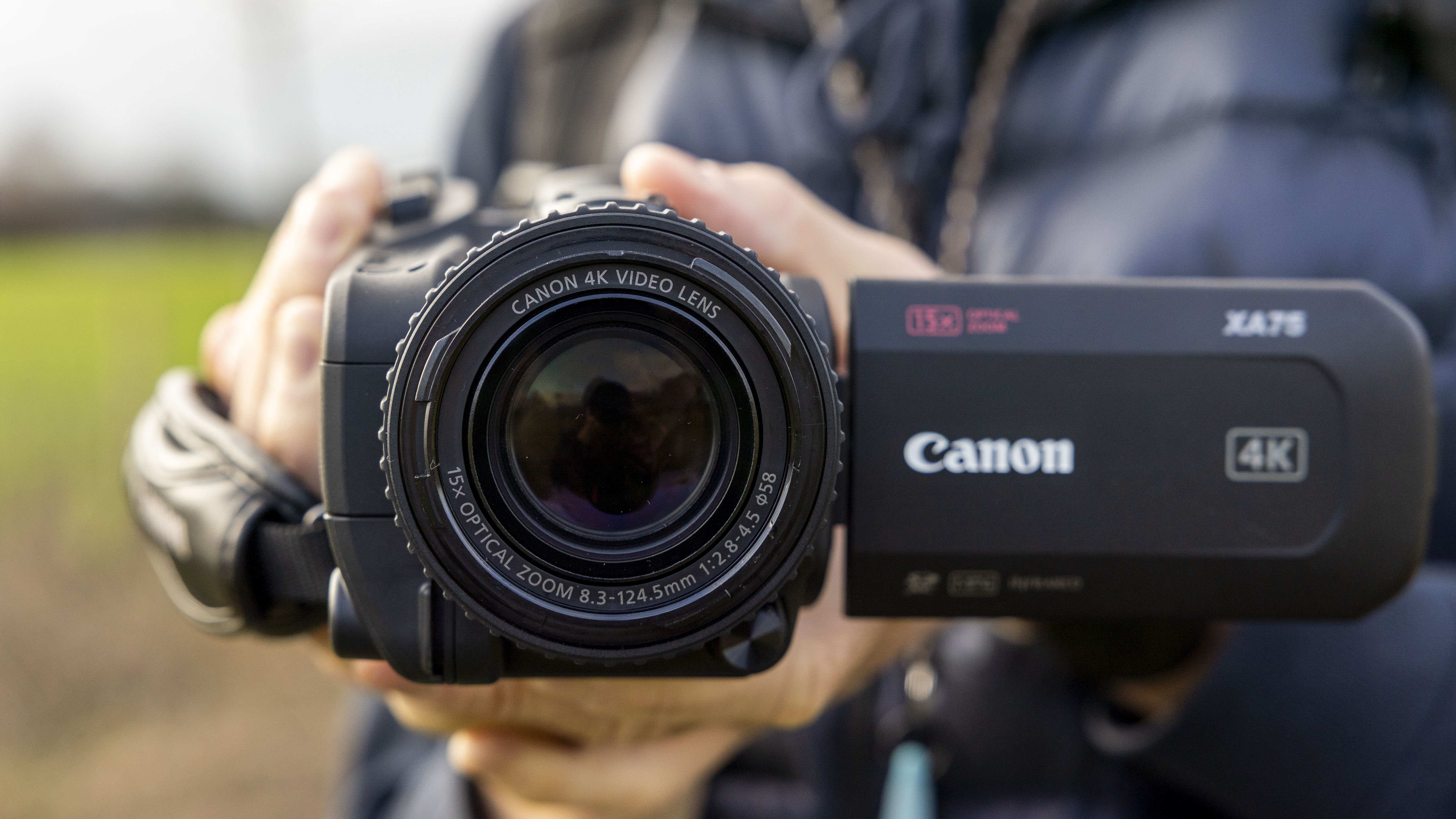
Canon XA75: Design & Handling
The Canon XA75 is slightly bigger than other XA models in the manufacturer's pro lineup, but it's not unwieldy. At just under a kilo body-only, or 1465g when equipped, it actually suits larger hands compared to the diminutive XA65 and HF G70. Like other professional XA models, it comes with a detachable handle that is screwed on to aid with carrying. It's incredibly comfortable to use, even for long periods, and importantly also adds two XLR terminals as well as a 4-channel linear PCM.
You get a double-slot SD card setup on the top, and this is pinged open at the flick of a switch, rather than behind a flimsy rubber cover or hidden behind the camera's LCD screen. The majority of other ports and inputs are at the front of the camera (under a cover), including a mini HDMI, USB-C for transferring files, 3.5mm microphone and headphone ports, and an SDI port. SDI cables can support higher resolutions and are much better for professional video production, so it's great to see this included. At the camcorder's rear, there's a second USB-C port – so you can charge and transfer simultaneously – plus a remote port.
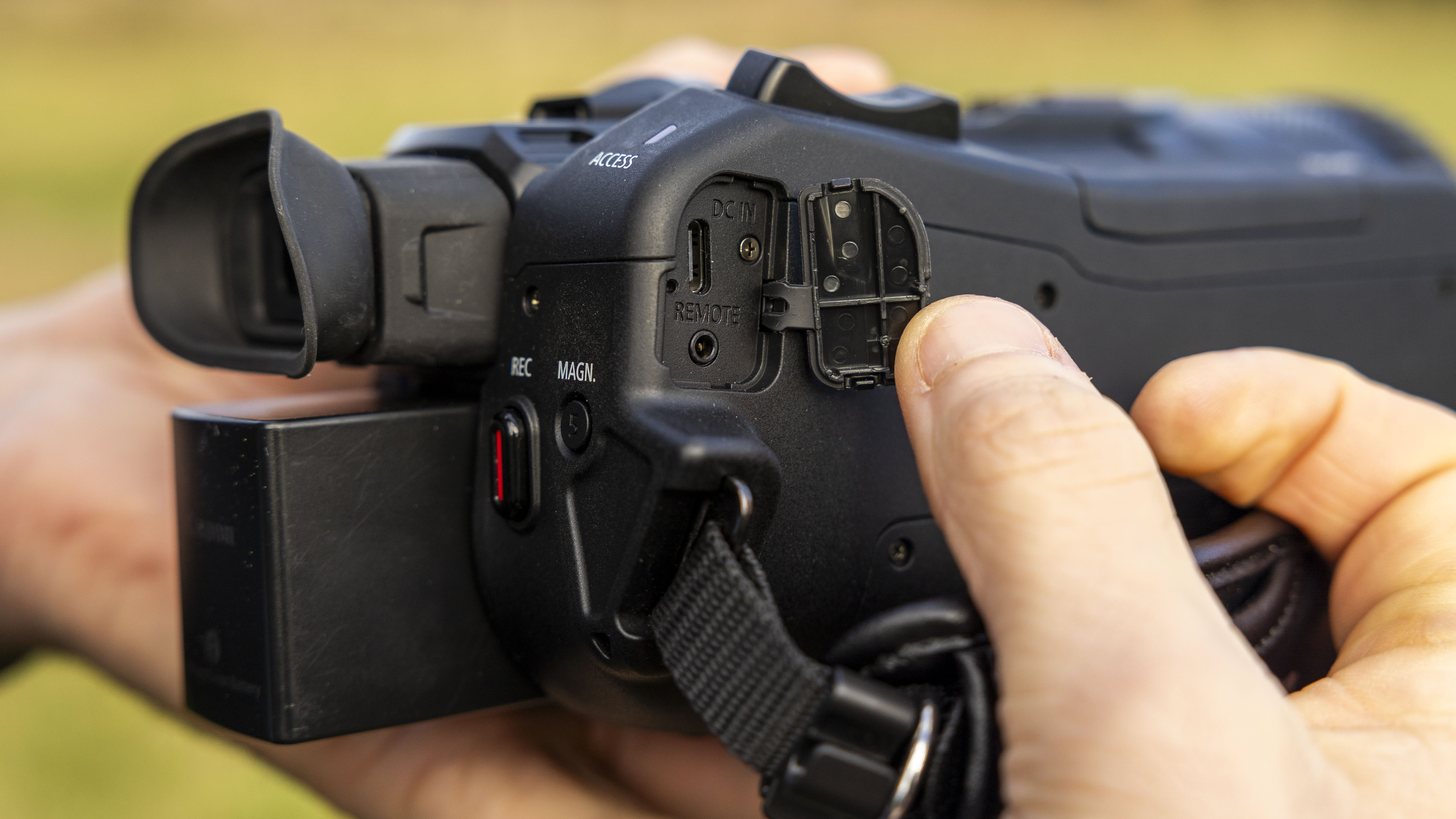

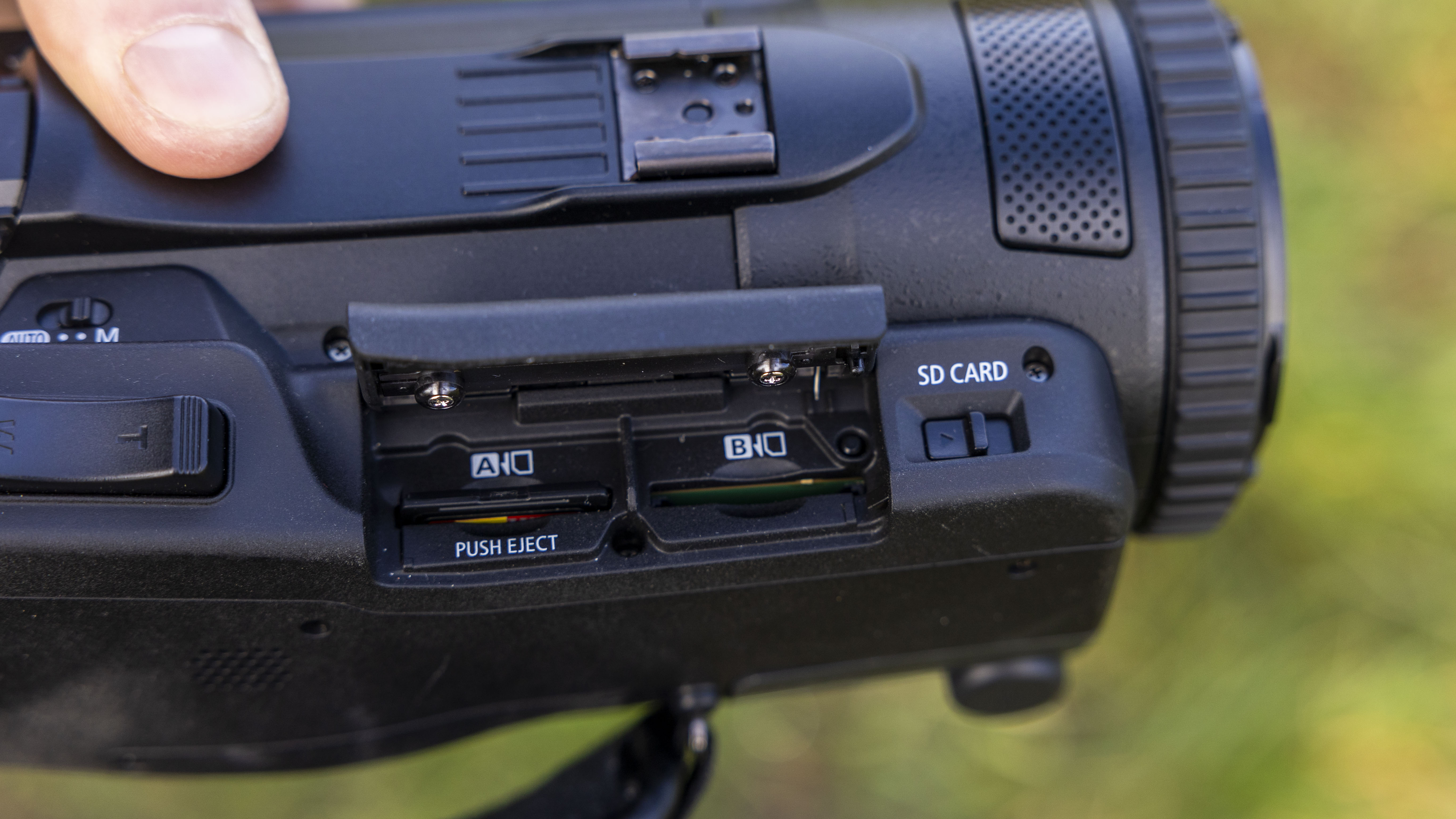
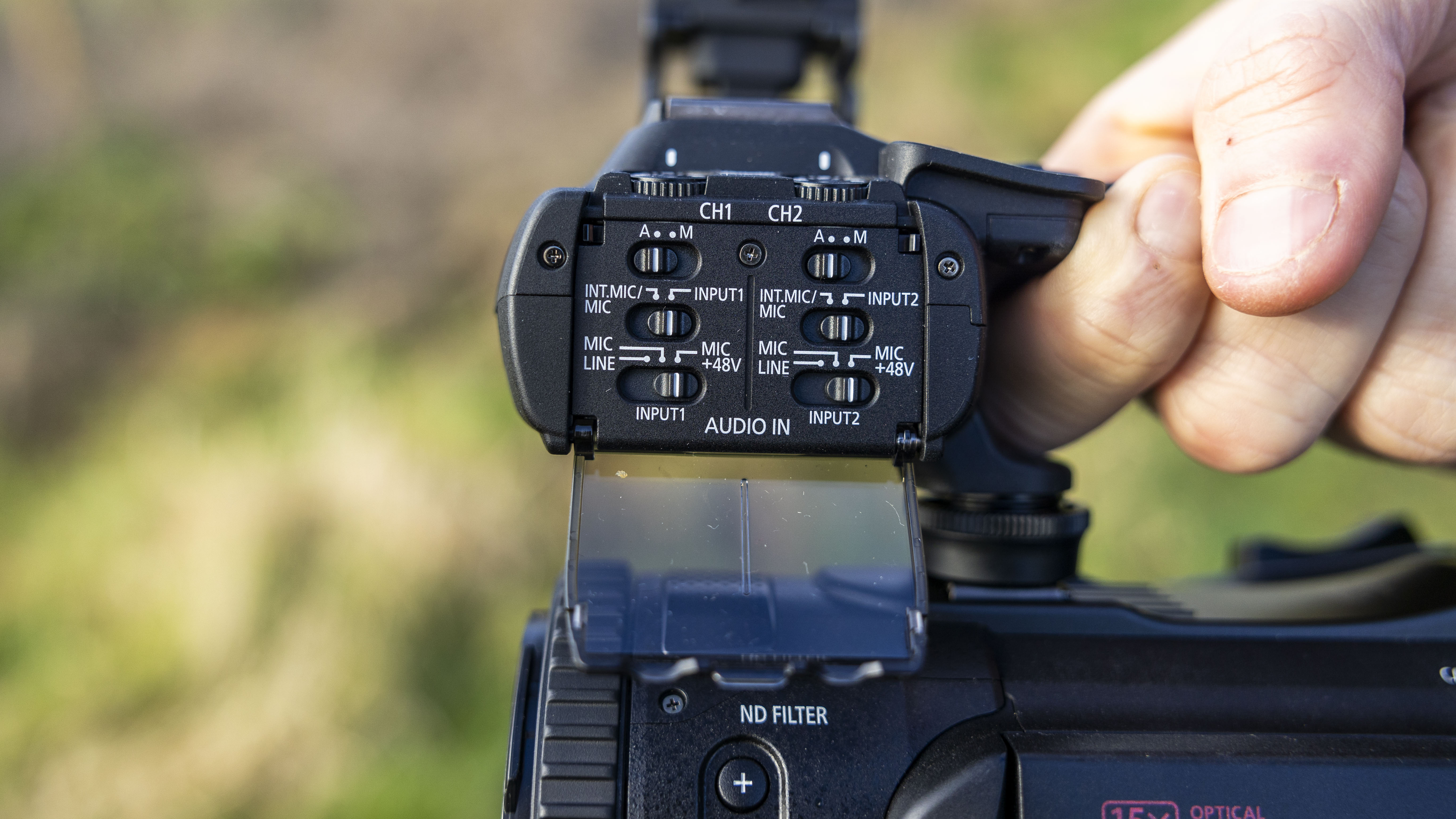
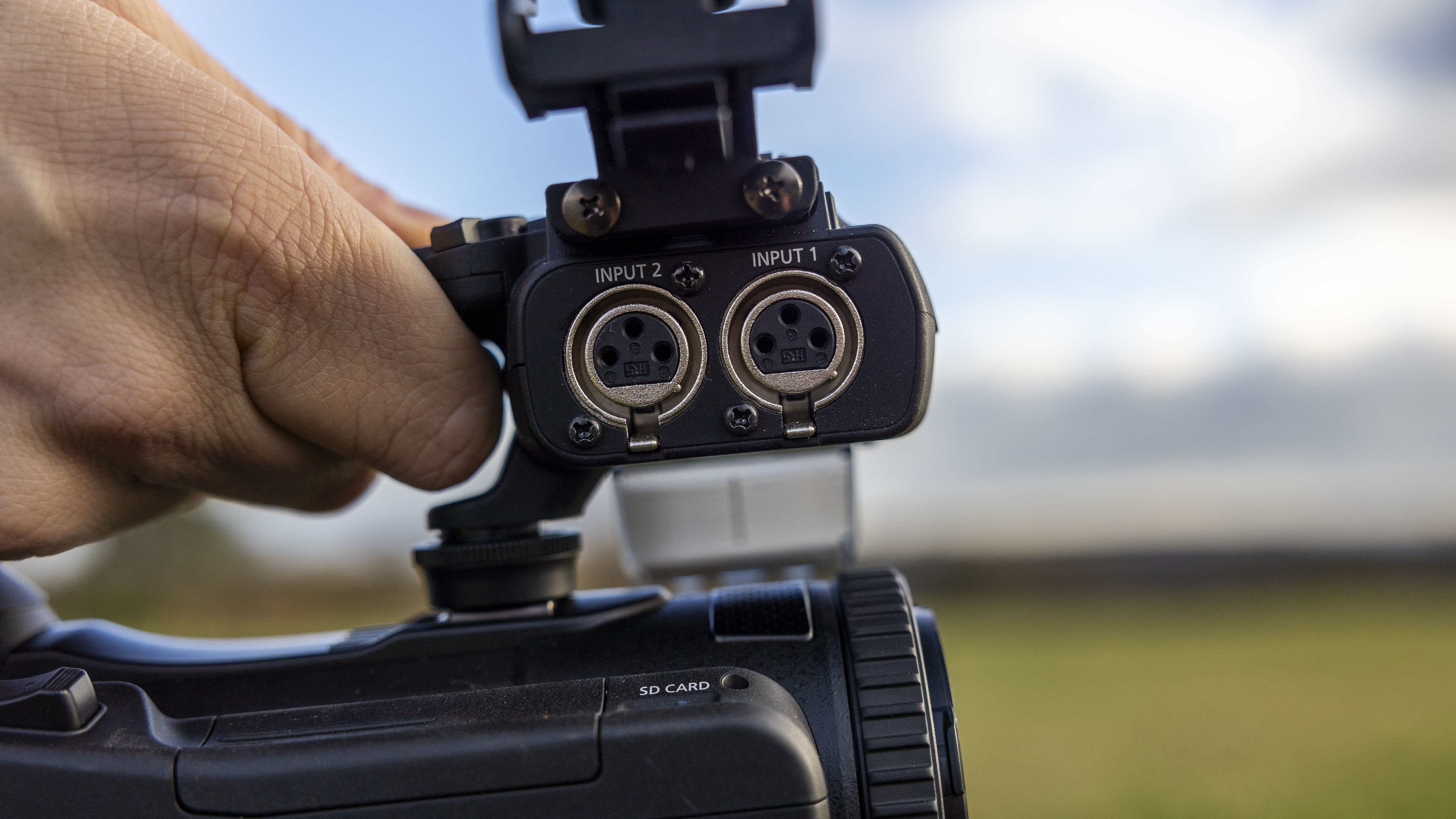
Being aimed at true professionals means that the Canon XA75 gets more physical buttons than cheaper models, although nowhere near as many as pro mirrorless cameras. I loved being able to toggle the strength of the ND filter via buttons at the front near the lens, as it meant being able to react to changing light quickly. Likewise, there are five assignable buttons on the camera body, including two on the monitor, and you can set these up for quick access to parameters like white balance.
Limiting the amount of buttons is a clever move, as it helps to keep the camera body compact and uncluttered, and enables users to set up the device in a way that works for their workflow or chosen output. Other buttons include a big, raised, red, record button that's easy to find when you're looking through the viewfinder. If for any reason you're handholding the XA75 and recording with it facing toward you, it's very difficult to reach around to record.
Changing settings on the camcorder menu is straightforward, thanks to the big and bright LCD monitor and the five menu screens; Camera, Recording, Audio, Display, and System. As a still photographer, I generally prefer to use Live View over the electronic viewfinder when composing and reviewing images. However, the XA75's 0.36-inch EVF is a complete joy to use, being crisp (1.77-mil dots) colorful, and immersive so that you get lost in what you're shooting. So lost in fact, that at one point I tripped over a log while filming.
The XA75 is surprisingly compact, very comfortable, and sensibly designed both for physical and digital controls. The touchscreen is responsive for menu navigation and setting autofocus, and the buttons are pressable even with gloves on. My main concern is its durability and weather resistance, given that Canon doesn't give any official rating or guidance to use the camcorder outdoors.
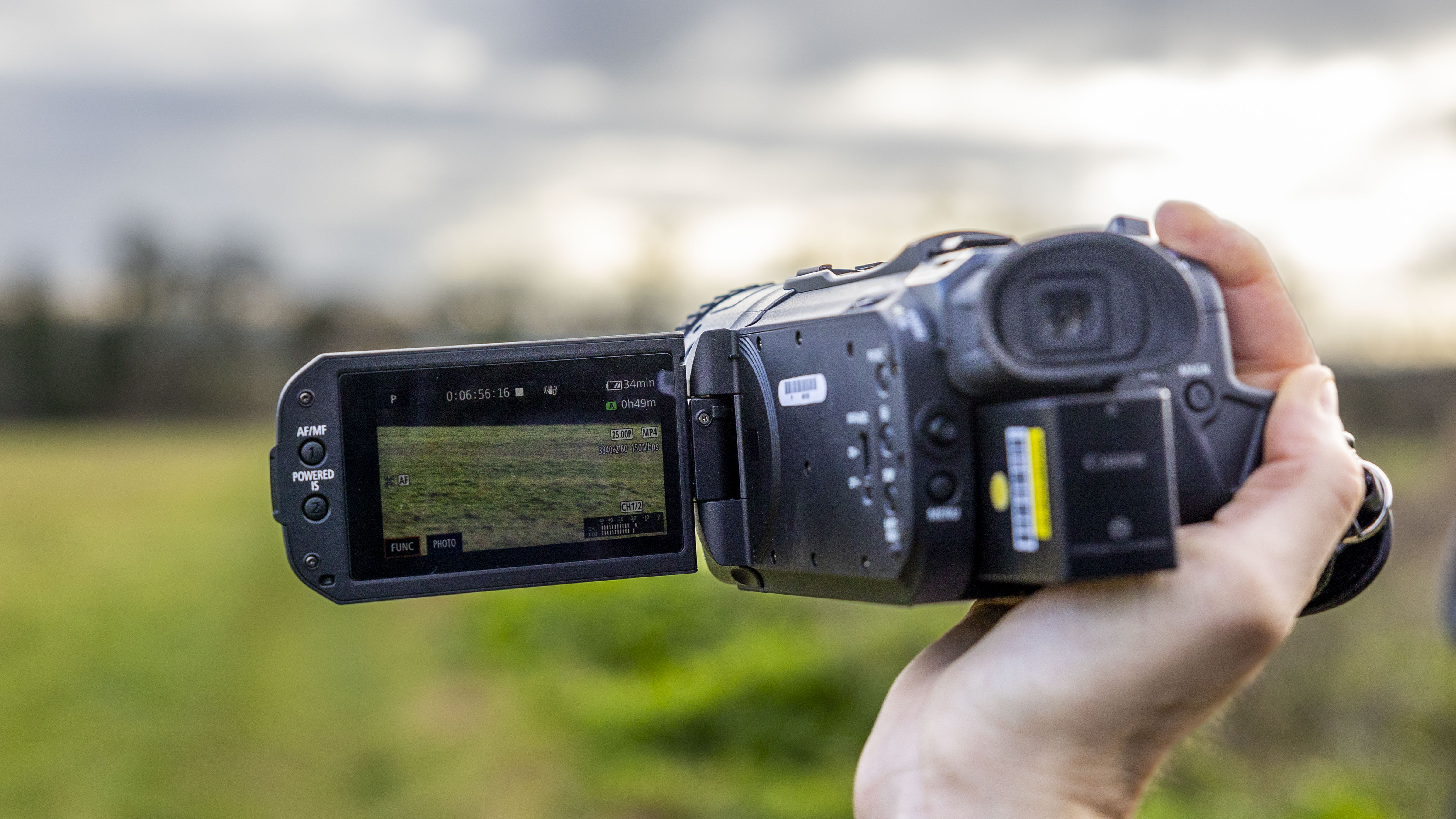
Canon XA75: Performance
Overall, I was more impressed with the image quality from the Canon XA75 than I had been with the HF G70 or XA65. That's partly down to the larger 1-inch sensor and the way it handles low-light scenes, which have more tonal range and fewer muddy tones in the shadows. The aperture range of f/2.8 - 4.5 and nine aperture blades contribute towards pleasing bokeh in some situations, but not all. There were a few times that I purposely removed the lens hood to introduce lens flare (please don't write in), but the lens hood did a good job of reducing contrast and light leaks in footage when attached.
Autofocus is also an improvement over the cheaper XA65, thanks to Canon's advanced Dual Pixel CMOS AF. I was able to set the camera to Face Detection AF or Face Tracking and the camera would still lock onto my face when walking into or out of the frame. Stabilization set to the strongest Dynamic mode is fine for walking shots when you're using the handle, but it's still very wobbly at the full 15x zoom and not at the same standard as my Canon EOS R5 combined with a video lens. The digital zoom boosts to 300x with 5-axis image stabilization still active, but I was only comfortable trying this while on a sturdy tripod.
Even though this is Canon's most expensive professional camcorder, you don't get Canon Log for color grading. You have the option to match colors with other Canon cameras using the custom picture menu, and while this got close to my Canon mirrorless when I set both to the same value, I'd probably leave this step to the editing stage in the future. Likewise, I kept the camcorder on an automatic white balance and found it to be very accurate, but under artificial lighting, it's easy to set the value manually.

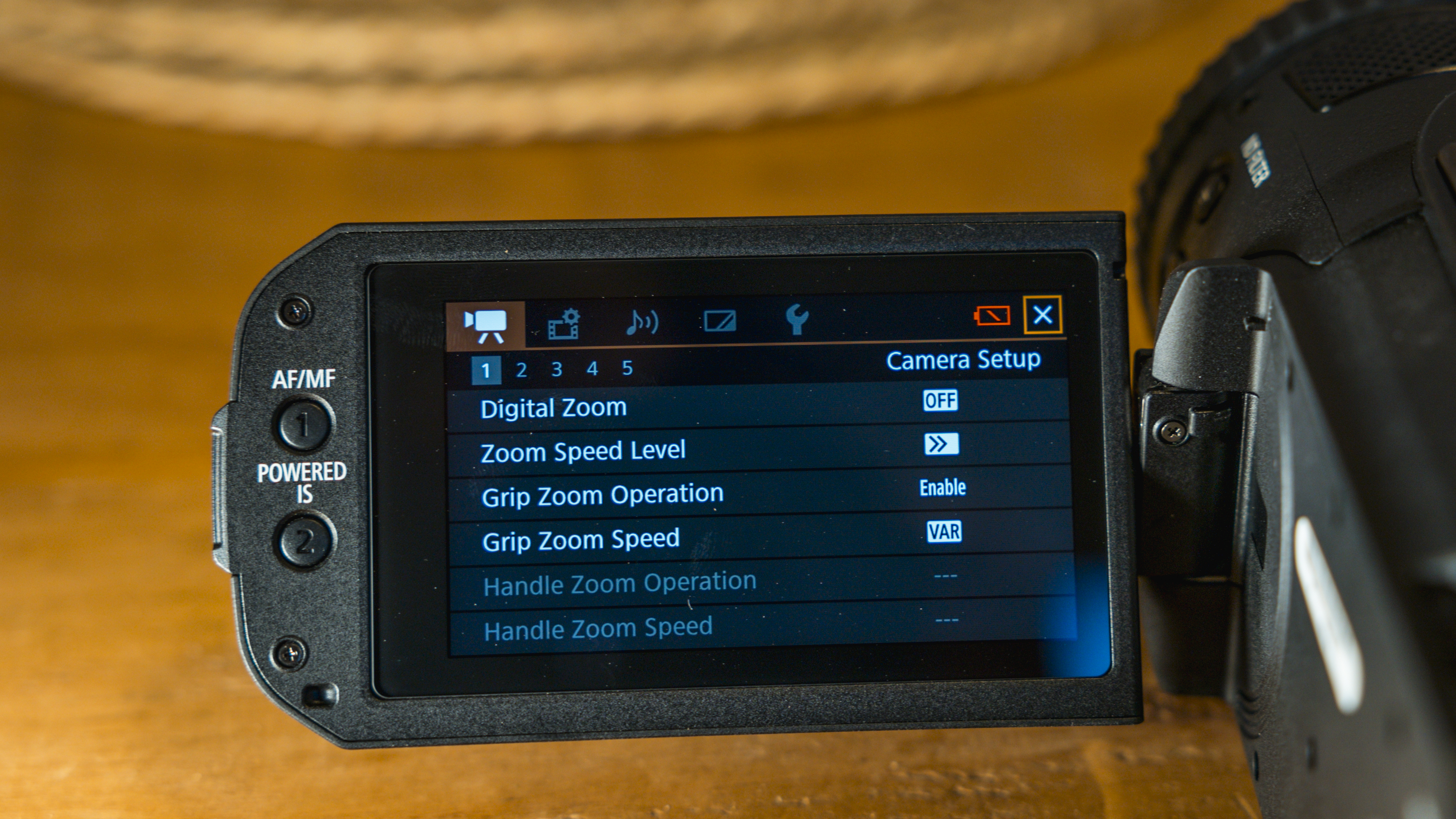
The in-built neutral density filter has three densities: ND 1/4, 1/16, and 1/64, which are motor-driven at the touch of a button and effective at blocking excess light. In terms of exposure, I mainly used Center-weighted average metering, but Av, Tv, and Sports allow you to take more control of the outcome. When left to its own devices, the camcorder tended to underexposure in high-contrast situations. You get a host of novelty modes like Snow and Beach, but I wonder whether a professional paying this much for a camcorder would ever use them.
When I set up the dual SD card slots for simultaneous recording of MP4 and XF-AVC formats – with two SanDisk Extreme Pro cards – there weren't any noticeable delays in recording or writing footage, as I've found with mirrorless cameras in the past. As promised, MP4 gives you 4K 150Mbps for smaller files against the XF-AVC's 160Mbps, but I couldn't notice a significant difference in quality.
The infrared mode enables you to capture video in conditions with little to no ambient light – think black-and-white footage reminiscent of the Blair Witch Project. Infrared mode is incredibly effective, and while the sharpness and focus speed can't match daylight footage, you can capture up to about 10 meters away from the camera without obstruction – a great advantage for filming pieces at night.
Despite being a solid all-rounder, I'd never buy the XA75. And that's because I found the video options so limited. You get 25P at 4K UHD resolution, and that's it. Not even 24P. Compare that to my Canon EOS R6 (which is now cheaper) with 59.94, 50, 29.97, 25, and 23.98fps options, and the mismatch for me doesn't stack up. It doesn't look like firmware updates will arrive to add this functionality any time soon, either.
Canon's solution to this is the addition of slow-motion (Full HD 0.5x) and fast-motion (4K/Full HD up to 1200x) options, which can speed or slow footage for greater creativity. I'm sure it's a solid replacement for more frame rate options, but it can be effective at condensing sequences in longer or shorter clips.
High-quality audio is just important for professional productions. The XA75's built-in microphone is clear enough to rely on in a pinch, but struggles in windy conditions or when noises are coming from different directions. When you add a professional XLR microphone, the experience is far superior. I slotted in an Audio Technica AT875R, and once hearing the satisfying click of the mic being securely held in the port, I was ready to record better audio immediately. Of course, high-end 3.5mm microphones will have the same effect, especially if you monitor the audio levels using a pair of headphones and check for clipping on the LCD monitor.
Canon XA75: Sample video
Over a few weeks, I took the Canon XA75 out on walks in between rain showers. I shot indoors and outdoors in low light, outside in bright light, and under artificial LED lights while the camcorder was rigged up to my iMac – to test out Livestreaming. These clips were shot at the maximum 3840 x 2160 px resolution, at 25P, as MP4 files.
Canon XA75: Final Verdict
The Canon XA75 is powerful enough to be used for broadcasting but small enough not to be noticed. That makes it perfect if you cover live events like conferences and weddings, and want to stay candid and out of the way is key. As someone who's filmed several weddings with the best hybrid cameras, I found the form factor much easier to use than a DSLR, and I was surprised by how good the XA75's low-light footage was in comparison to my Canon EOS R6.
My main gripe is that, given this is Canon's priciest professional camcorder, the omission of a Wi-Fi module feels limiting. Transferring content from the SD cards or via USB-C isn't an option when you're on the fly - which is a lot of the time with a camcorder - and want to send or share content with a team quickly. This won't affect everyone's workflow, particularly wedding shooters who are bound to create a seamless edit later on their computer, but it's something to bear in mind.
At this price point, the maximum UHD 4K30p video recording is also disappointing, especially when cheaper camcorders like the Panasonic HC-X2000E manage 4K 50p/60p at a higher bitrate, and the Canon EOS R6 Mark II offers 6K 60p ProRes RAW via HDMI. That said, the XA75 delivers where it needs to for quality, and its autofocus tracking, power zoom, XLR inputs, and unlimited continuous recording put it where it needs to be for jobbing professionals. The ease of using a camcorder as sensible as the XA75 is unmatched, and for Livestreaming events it's one of the best camcorders for the job.
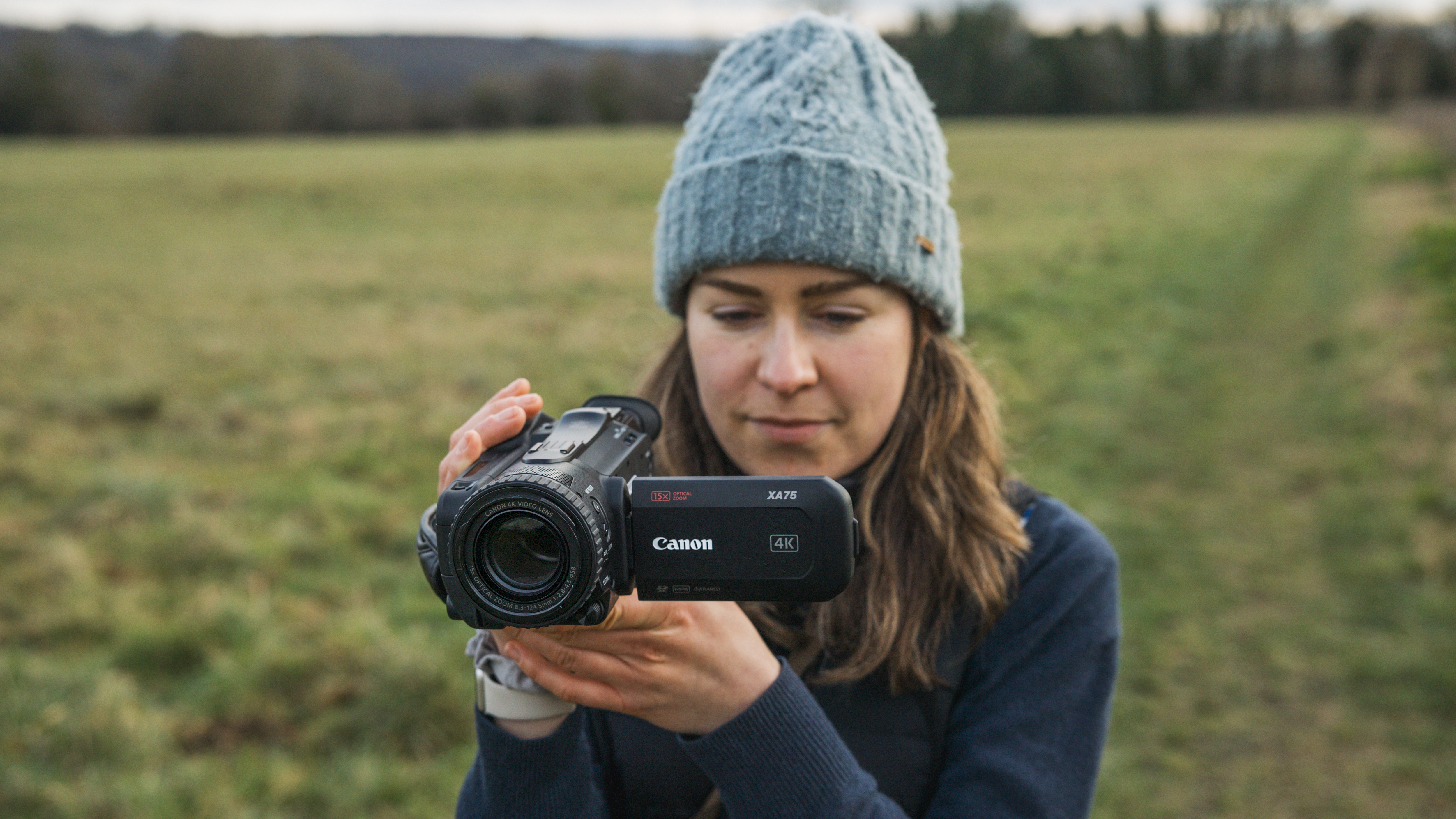
Should you buy the Canon XA75?
✅ Buy this if...
- You're a professional broadcaster
- You use XLR microphones
- You want a compact all-in-one
🚫 Don't buy this if...
- You want Wi-Fi built-in
- You've got a modest budget
- You won't use the handle
Alternatives
If you like the design and features of the XA75 but not the price, the Canon XA65 is about a fifth cheaper. You get the same processor, streaming via USB-C, and two XLR terminals on a detachable handle, but the CMOS sensor is slightly smaller at 1/2.3-inch.
If you want pro-level video, an affordable price, and a camera that handles more like a mirrorless than a camcorder, look to the Sony FX30. For ambitious filmmakers who also want high-quality stills, the 26MP sensor and 4K 120p video resolution are a great combo.

Lauren is a writer, reviewer, and photographer with ten years of experience in the camera industry. She's the former Managing Editor of Digital Camera World, and previously served as Editor of Digital Photographer magazine, Technique editor for PhotoPlus: The Canon Magazine, and Deputy Editor of our sister publication, Digital Camera Magazine. An experienced journalist and freelance photographer, Lauren also has bylines at Tech Radar, Space.com, Canon Europe, PCGamesN, T3, Stuff, and British Airways' in-flight magazine. When she's not testing gear for DCW, she's probably in the kitchen testing yet another new curry recipe or walking in the Cotswolds with her Flat-coated Retriever.
